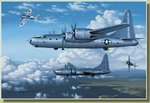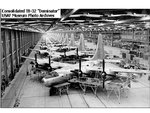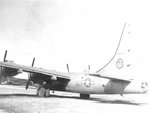- Thread starter
- #21
FLYBOYJ
"THE GREAT GAZOO"
Good info KK - from the text....
No surplus B-32s were ever sold to foreign air forces, and the aircraft's complexity and reputation for mechanical unreliability made it unattractive on the postwar commercial market. There is only example in which a commercial customer showed any interest in a surplus B-32. In June 1947, Milton J. Reynolds, a pen manufacturer, announced that he was planning to buy a surplus B-32 for a round-the-world flight over both poles, but this plan was never carried out.
No surplus B-32s were ever sold to foreign air forces, and the aircraft's complexity and reputation for mechanical unreliability made it unattractive on the postwar commercial market. There is only example in which a commercial customer showed any interest in a surplus B-32. In June 1947, Milton J. Reynolds, a pen manufacturer, announced that he was planning to buy a surplus B-32 for a round-the-world flight over both poles, but this plan was never carried out.






